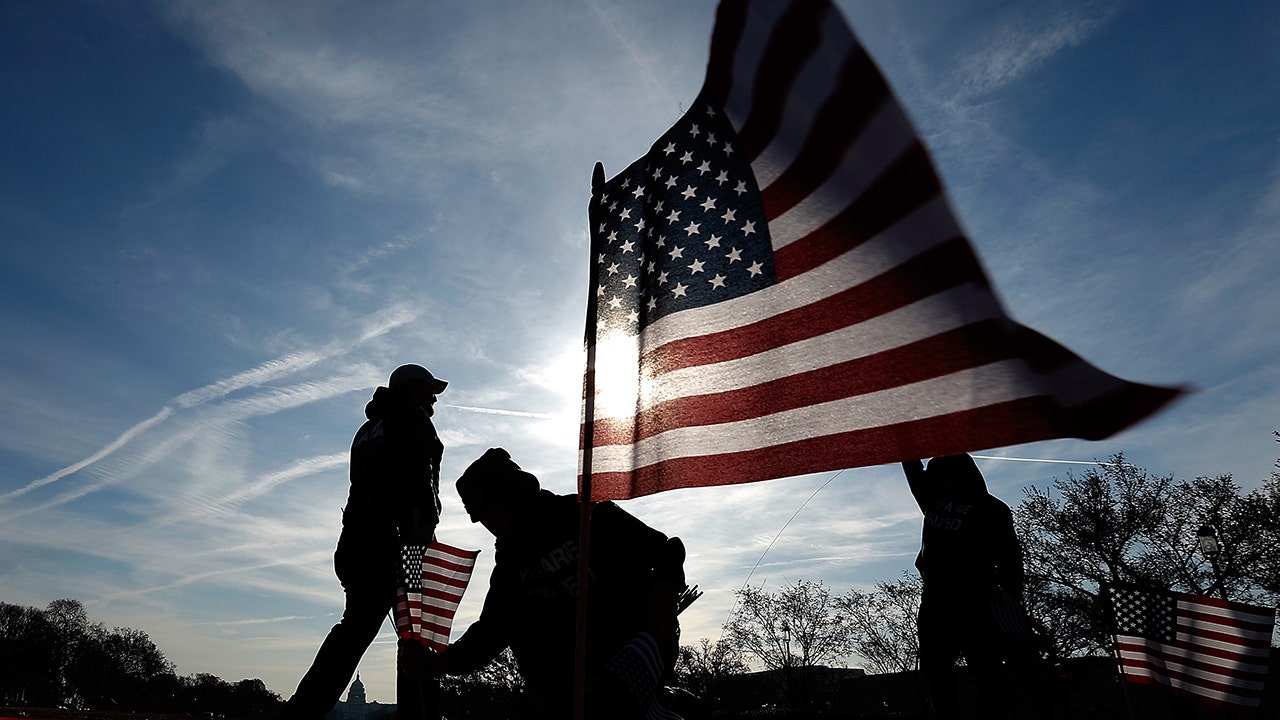On September 3, 1777, our nation’s American flag was flown for the first time in battle during the Revolutionary War at Cooch’s Bridge, Delaware, according to History.com. Patriot General William Maxwell ordered the raising of the Stars and Stripes banner as his infantry and cavalry clashed with British and Hessian troops.
Despite their ultimate defeat, the rebels retreated to General George Washington’s forces near Brandywine Creek in Pennsylvania. This momentous event marked the birth of our national flag, which was known as the “Stars and Stripes.” It was based on the “Grand Union” flag carried by the Continental Army in 1776, consisting of 13 red and white stripes, as Politico tells us.
Charles Thompson, the secretary of the Continental Congress, explained in a report to the delegates that the white in the flag symbolized purity and innocence, the red represented hardiness and valor, and the blue signified vigilance, perseverance, and justice. General George Washington himself stated, “We take the stars from heaven, the red from our mother country, separating it by white stripes, thus showing that we have separated from her, and the white stripes shall go down to posterity representing liberty.”
Various designs with 13 stripes were used in 1776 and 1777 until Congress established the official design on June 14, 1777, now known as Flag Day, as recognized by the U.S. Department of Veterans Affairs. The act decreed that the flag of the thirteen United States would consist of thirteen red and white stripes, with a union of thirteen white stars on a blue field representing a new constellation.
The sentiment expressed by General Washington during that proud time in our nation’s history was that the stars were taken from heaven, the red from our mother country, and separated by white stripes to symbolize our separation from her. The white stripes would be a representation of liberty for generations to come.
On June 14, 1877, the first Flag Day observance was held on the 100th anniversary of the adoption of the Stars and Stripes. According to folklore, Betsy Ross, a Philadelphia seamstress, designed the new canton for the flag at the request of General Washington. However, historians have been unable to definitively prove or disprove this legend.
Other significant acts influencing the design of the United States flag include the Flag Resolution of June 14, 1777, which called for thirteen stripes alternated in red and white and a union of thirteen white stars on a blue field representing a new constellation. The Act of January 13, 1794, stipulated fifteen stripes and stars, and the Act of April 4, 1818, returned to thirteen stripes and one star for each state added to the flag on July 4 following their admission.
Over the years, various executive orders, including those by Presidents Taft and Eisenhower, determined the proportions and arrangement of the stars on the flag. The stars were arranged in different configurations until settling on the current design of fifty stars in nine rows, staggered horizontally and eleven rows, staggered vertically.
In 1949, Congress officially designated June 14 as Flag Day, a national day of observance. Today, our nation’s flag continues to represent freedom and liberty, and Americans recite the Pledge of Allegiance with pride. The thirteen alternating red and white stripes symbolize the original thirteen colonies, while the fifty white stars on a blue field represent the fifty states.
Each color on the flag carries significance – red for valor and bravery, white for purity and innocence, and blue for vigilance, perseverance, and justice. The flag is flown at half-staff or half-mast during periods of mourning, which can be ordered by the president, a state governor, or the mayor of the District of Columbia. This typically occurs to honor the death of a government official, military member, first responder, or during national tragedies and days of remembrance such as Memorial Day.
Denial of responsibility! VigourTimes is an automatic aggregator of Global media. In each content, the hyperlink to the primary source is specified. All trademarks belong to their rightful owners, and all materials to their authors. For any complaint, please reach us at – [email protected]. We will take necessary action within 24 hours.


